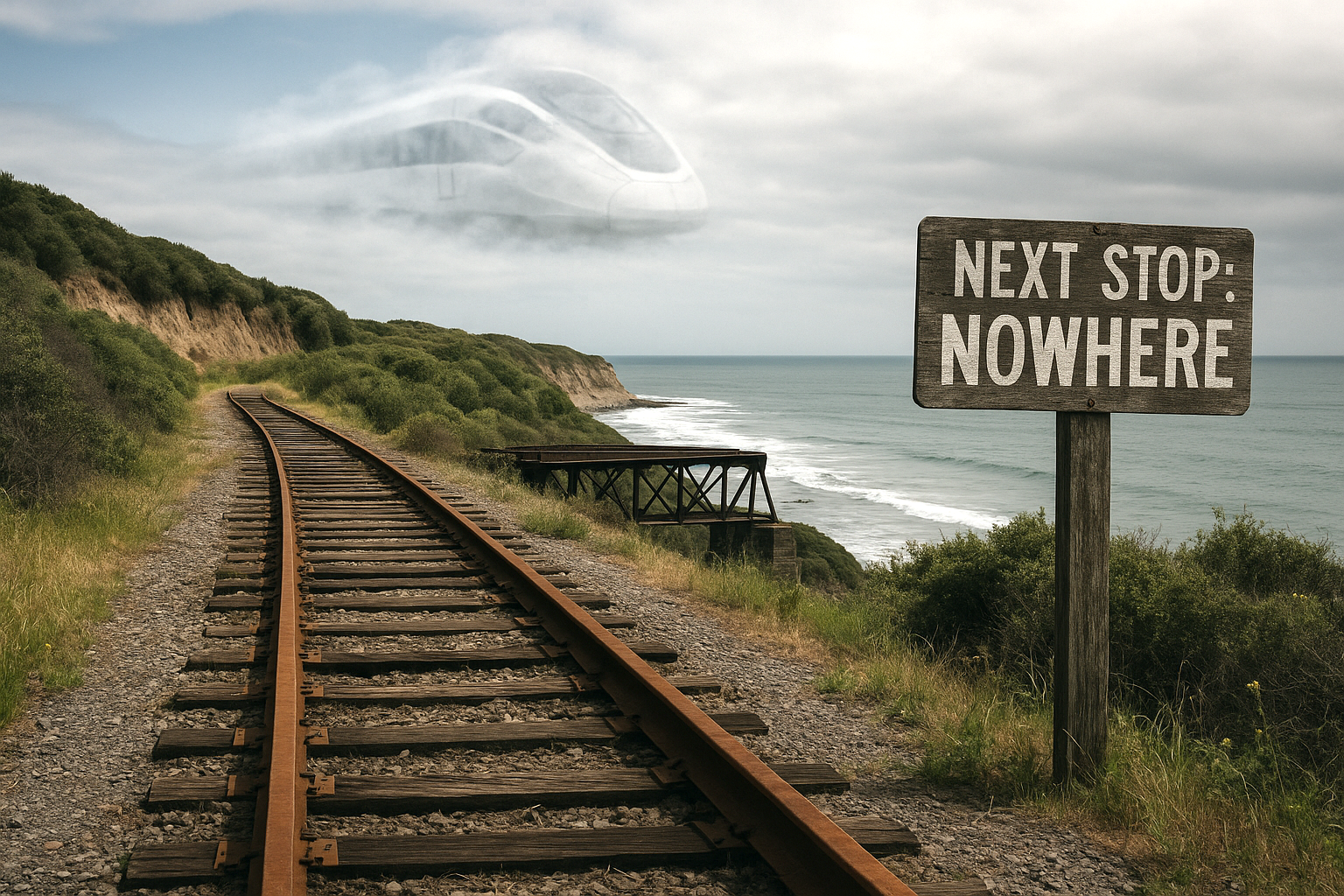The Last War Chronicles — Again
By Keith Bontrager
(This is a response to Matt Farrell’s 7/22/25 opinion piece published in Lookout Santa Cruz and on various social media platforms)
After all that’s gone on since the Measure D vote in 2022, and the reality of the ZEPRT project starts to be fleshed out, Mr. Farrell has chosen to fight the last war to defend it. Again.
Is that all he’s got? As weak as it is, I think it might be.
Currently
Planning for a potential passenger rail system continues. An executive summary of the Draft Concept Report was published recently. That means quite a bit more information is available now than there was in 2022.
That concept report was something FORT celebrated when it began not too long ago. But now that the preliminary results are available they aren’t very happy with it. Which makes sense; the imaginary train they’ve promoted for decades is no longer. The reality check in the executive summary came down hard on that “vision“.
Their response (besides dragging out the results of the 2022 vote again)
More studies, peer review, make it cost less somehow, the consultants don’t know what they are talking about, etc.
They’d like to find some new “subject matter experts” who will tell them what they want to hear. That is predicable I suppose.
The current executive summary is selling the system pretty hard, as is always the case at this phase of planning. It includes some demonstrably exaggerated ridership forecasts. Again, standard operating procedure. And the very high construction cost estimate does not include several significant elements of the project, elevated tracks along Beach St and over the wetlands in the south, along with coastal armoring in Capitola and La Selva Beach. Neither are optional. So the estimate will go up from $4.3B. That’s also typical - cost estimates do not decrease as projects advance through planning.
The most reasonable takeaway from all of this is that it will cost too much to build and operate, and serve far too few people in the foreseeable future to justify that cost. In simple terms, the executive summary shows that the ZEPRT project is doomed.
Going a little deeper
The plug is likely to be pulled on the federal grant program the RTC was counting on to fund the project. That is run by the Federal Railroad Administration and is called the Corridor Identification and Development (CID) program. It seems that the current administration is not too fond of mega expensive rail projects in California. The final decision is still up in the air, but without that federal grant program the project’s short term funding outlook is toast.
While that hasn’t put off the true believers, it’s certainly a signal to everyone else that wrapping up the planning would be sensible at this point. The RTC took their best shot at it for a decade, but it’s not going to work out.
This is a perfect opportunity for that step. The next phase of planning is unfunded, isn’t likely to be funded, and would only be a jobs program for the consultants if it was funded. It’s not work that the RTC would be doing if the project advanced in the FRA’s CID program. Wasted time, wasted resources.
The logical steps to railbanking
The executive summary shows that there isn’t likely to ever be a passenger rail system built here.
That means there won’t be any track repairs or bridge replacements, both of which are necessary for passenger and freight trains to operate on the length of the corridor. Those will require a grant that doesn’t exist without passenger rail.
So freight rail service will end at MP 6 in Watsonville. Forever.
Without a functioning track the freight operator will walk. They’ll have to. They’re losing money here.
At that point the RTC will be left with an unusable rail corridor, without an operator, and with no way to change that.
That’s the sort of situation that will lead to abandoning the corridor completely, or railbanking it. The former means letting portions of it go back into private ownership. No one wants that.
Greenway might have been a little ahead of the game, but it looks like their preferred alternative will soon be the only alternative for the RTC.
Also, the “state and federal funding expected to cover 80-90% of project costs” thing is ludicrous. Mainlining pure hopium.


